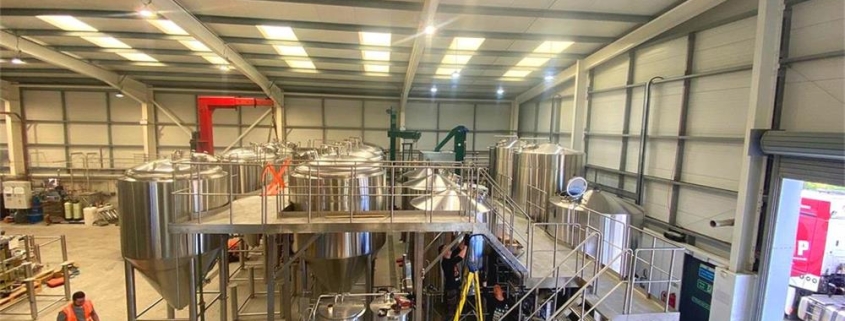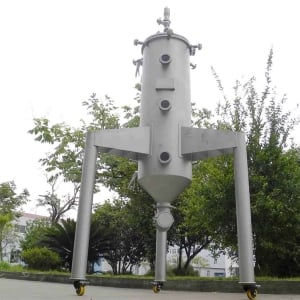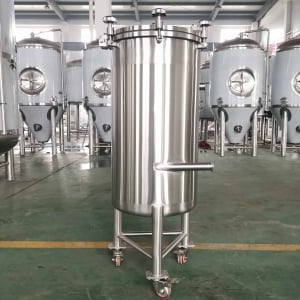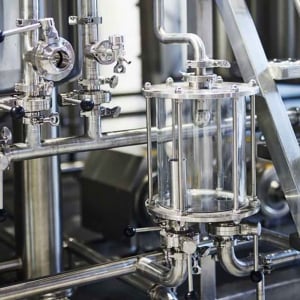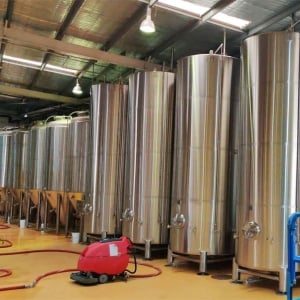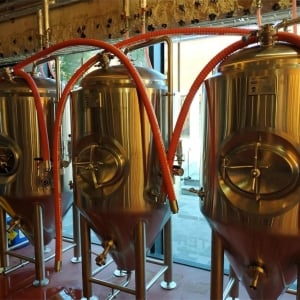Electric Brewing System
Electric brewing systems are revolutionizing the way homebrewers and craft brewers produce their favorite beverages. Whether you’re an amateur just getting started or a professional looking to scale your operations, an electric brewing system offers efficiency, precision, and convenience. This guide will take you through everything you need to know about electric brewing systems, from understanding their components to choosing the right one for your needs.
Overview of Electric Brewing Systems
An electric brewing system automates the process of brewing beer, replacing traditional gas or propane heat sources with electric elements. These systems offer consistent temperature control, which is crucial for the brewing process. They are also safer to use indoors, more energy-efficient, and reduce the risk of contamination from open flames or gas leaks.
Electric brewing systems come in a range of sizes and configurations, making them suitable for homebrewers, small craft breweries, and larger-scale operations. They are known for their ease of use, providing greater control over the brewing process compared to more traditional methods.
Key Benefits of Electric Brewing Systems
- Precision and Control: Accurate temperature management ensures better control over the brewing stages.
- Energy Efficiency: Electric systems are generally more energy-efficient, especially for small-scale brewing.
- Indoor Usage: Safer for indoor use due to the absence of open flames and gas.
- Ease of Customization: Many systems allow for personalization depending on your brewing needs.
Now, let’s dive deeper into the equipment guide, brewing process, supplier options, and more.

Equipment Guide for Electric Brewing Systems
An electric brewing system comprises several components that work together to create the perfect brew. Understanding the various parts of the system will help you choose the right equipment based on your specific brewing goals.
Main Components of an Electric Brewing System
- Electric Heating Element: This is the heart of the system, providing the heat required for boiling the wort and maintaining precise temperatures during the mashing process.
- Mash Tun: A container where the malted grains are mixed with water. Electric mash tuns often feature built-in heating elements and temperature controls.
- Brew Kettle: The vessel where wort (unfermented beer) is boiled. Electric systems allow the brew kettle to be heated evenly with little risk of scorching.
- Control Panel: This is where you manage the heating element and monitor temperatures. Some advanced systems come with digital interfaces or apps for smartphone control.
- Pumps: These help circulate the wort during the brewing process, ensuring even temperature distribution and efficient transfer between vessels.
- Fermentation Tank: Where the wort is transferred after boiling to cool and ferment. Many electric systems include built-in cooling mechanisms.
Equipment Types and Their Features
| Equipment Type | Features | Use |
|---|---|---|
| Single-Vessel System | All-in-one system combining mash tun, kettle, and fermentation vessel. Ideal for beginners. | Small-scale brewing or homebrewing. |
| Two-Vessel System | Includes a mash tun and brew kettle, offering more control and flexibility. | Intermediate brewers. |
| Three-Vessel System | Separate vessels for mash tun, lauter tun, and brew kettle. Best for advanced brewers. | Professional brewing, larger-scale brewing. |
| Automated System | High-tech systems with full automation, including heating, cooling, and stirring mechanisms. | Commercial or high-volume brewing. |
Electric Brewing Process: Step-by-Step Guide
Brewing with an electric system simplifies many of the steps compared to traditional methods. Below is a breakdown of the main stages in the brewing process when using an electric brewing system.
1. Mashing
Mashing is the first step in brewing, where you steep malted grains in hot water. The goal here is to convert the starches in the grains into sugars. An electric brewing system with precise temperature control ensures that the mash is kept at the ideal temperature (usually between 145°F and 158°F).
2. Lautering
After mashing, the grain is separated from the liquid wort through a process called lautering. The electric system’s pump can assist in circulating the wort and draining it efficiently into the brew kettle.
3. Boiling
In the boiling stage, the wort is brought to a rolling boil for about 60-90 minutes, allowing for the addition of hops, which give the beer its bitterness and aroma. Electric elements ensure an even boil and prevent the wort from scorching.
4. Cooling
Once the boiling is complete, the wort needs to be rapidly cooled before it can be fermented. Some electric brewing systems come equipped with a built-in cooling system or heat exchanger for this purpose.
5. Fermentation
The cooled wort is transferred to a fermentation tank where yeast is added. Over the next few days to weeks, the yeast will convert the sugars into alcohol and carbon dioxide, producing beer.
6. Bottling or Kegging
After fermentation is complete, the beer is either bottled or transferred to kegs for storage and carbonation.
Design and Capacity Considerations for Electric Brewing Systems
When selecting an electric brewing system, it’s important to think about the size and design to ensure it fits your brewing space and meets your production goals. Here’s a breakdown of important factors:
| Consideration | Details |
|---|---|
| Capacity | Available in a wide range from 1-gallon systems for home use to 30-gallon systems for commercial use. |
| Space | Consider the size of your brewing area. Systems range from compact, countertop units to larger setups requiring dedicated space. |
| Design | Many systems are sleek and modern, often made from stainless steel. Some offer compact designs for small kitchens or larger, modular setups for scaling. |
| Layout | Electric systems can be configured in single, two, or three-vessel setups depending on your brewing goals. |
| Customization | Many systems allow for custom features such as additional pumps, custom control panels, and personalized automation. |
Suppliers and Price Range of Electric Brewing Systems
The cost of an electric brewing system can vary widely depending on the size, complexity, and brand. It’s important to compare suppliers and consider factors like warranty, shipping, and after-sale service.
| Supplier | Price Range | Key Features |
|---|---|---|
| Brewtech | $800 – $3,500 | Known for durable, stainless steel systems with customizable options. |
| Anvil Brewing | $600 – $2,500 | Affordable systems with reliable temperature control and easy setup. |
| Grainfather | $900 – $4,000 | Offers automated, app-controlled systems. Ideal for both beginners and pros. |
| Spike Brewing | $1,000 – $6,000 | Premium systems with professional-grade features, perfect for large batches. |
| SS Brewtech | $900 – $5,500 | High-tech systems with precise temperature controls and advanced automation. |
Installation, Operation, and Maintenance of Electric Brewing Systems
Ensuring the longevity and efficiency of your electric brewing system depends on proper installation, regular maintenance, and efficient operation.
Installation Tips
- Location: Ensure the system is installed in a well-ventilated area with access to proper electrical outlets.
- Electrical Setup: Verify the power requirements of the system. Some large systems may need dedicated circuits.
- Positioning: Place the brewing vessels on a sturdy, heat-resistant surface.
Operation Tips
- Temperature Monitoring: Regularly monitor temperatures during mashing and boiling for optimal brewing conditions.
- Stirring: Ensure even distribution of heat by stirring the mash or using a system with an automatic stirrer.
- Hop Additions: Time your hop additions correctly during the boil to balance bitterness and aroma.
Maintenance Guidelines
- Cleaning: After each use, clean the brewing system with warm water and a food-grade sanitizer.
- Inspection: Regularly inspect the heating elements and control panel for signs of wear.
- Descaling: Periodically descale the system to remove mineral deposits from water.
How to Choose the Right Supplier for Electric Brewing Systems
Selecting the right supplier is just as important as choosing the system itself. Here’s how you can narrow down your choices.
| Factor | What to Look For |
|---|---|
| Reputation | Check reviews and ratings from other brewers. Opt for suppliers known for quality products and excellent customer service. |
| Warranty | Ensure the supplier offers a warranty on their systems, ideally covering parts and labor for at least one year. |
| Customization Options | If you require a custom setup, make sure the supplier offers the ability to tailor the system to your needs. |
| After-Sales Support | A supplier that provides tech support or troubleshooting advice after purchase can save you time and headaches in the long run. |
| Shipping Costs | Consider the cost and time of shipping, especially for larger systems. Some suppliers may offer free shipping on high-end systems. |
| Availability of Parts | Make sure the supplier offers replacement parts for your system, in case any components wear out over time. |
Pros and Cons of Electric Brewin Systems
Understanding the advantages and limitations of electric brewing systems can help you determine if it’s the right choice for your brewing setup.
| Advantages | Disadvantages |
|---|---|
| Precise temperature control | Higher upfront cost compared to propane systems |
| Energy-efficient | Limited mobility (requires proximity to power) |
| Safe for indoor use | May require electrical upgrades for large systems |
| Easy to automate with digital controls | Learning curve for beginners |
| Reduced risk of fire or gas leaks | May require regular maintenance of heating elements |
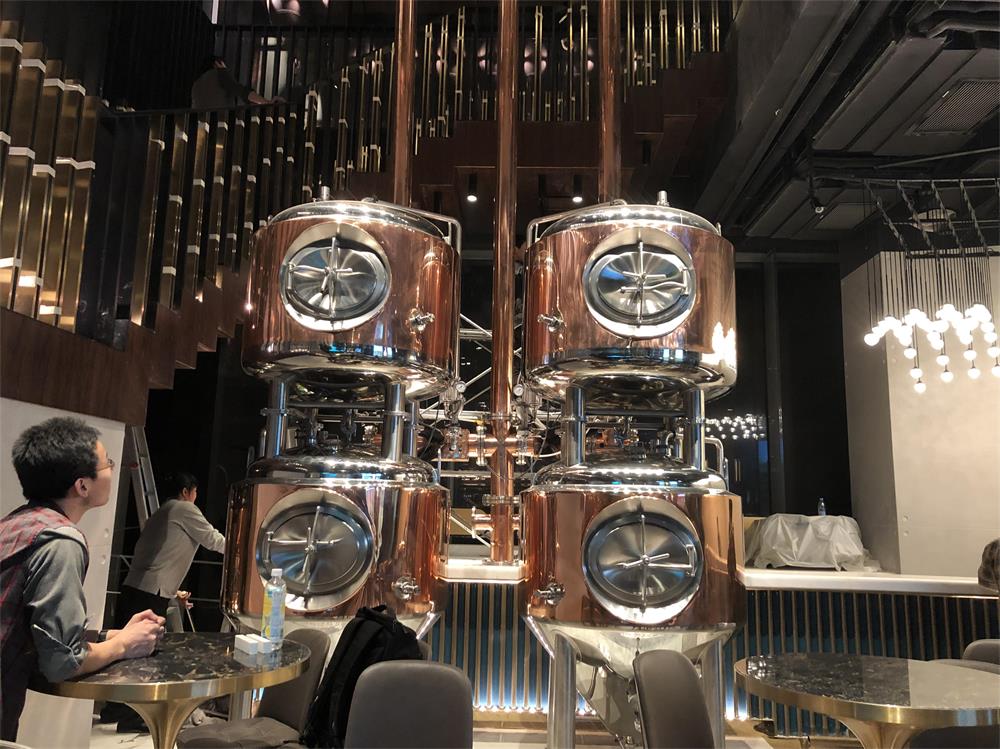
FAQ
| Question | Answer |
|---|---|
| What is the best size for a homebrew electric brewing system? | For most homebrewers, a system between 5 and 10 gallons is ideal, allowing for manageable batch sizes without taking up too much space. |
| Are electric brewing systems difficult to maintain? | Not at all. Most systems are easy to clean with regular water and sanitizer. It’s important to check the heating element for mineral build-up and descale periodically. |
| How do electric brewing systems compare to gas systems? | Electric systems offer more precise temperature control, are safer for indoor use, and are generally more energy-efficient. However, they are less portable than gas systems. |
| Can I brew different types of beer with an electric system? | Absolutely! Electric systems are versatile and can be used to brew a wide variety of beer styles, from IPAs to stouts, thanks to their precise temperature control. |
Conclusion
In conclusion, electric brewing systems provide an efficient, precise, and scalable solution for homebrewers and commercial brewers alike. With various equipment types, suppliers, and customization options available, there’s a system out there for every level of brewer. Whether you’re brewing small batches at home or producing beer on a larger scale, an electric brewing system offers the control, convenience, and safety needed to craft the perfect brew every time.

